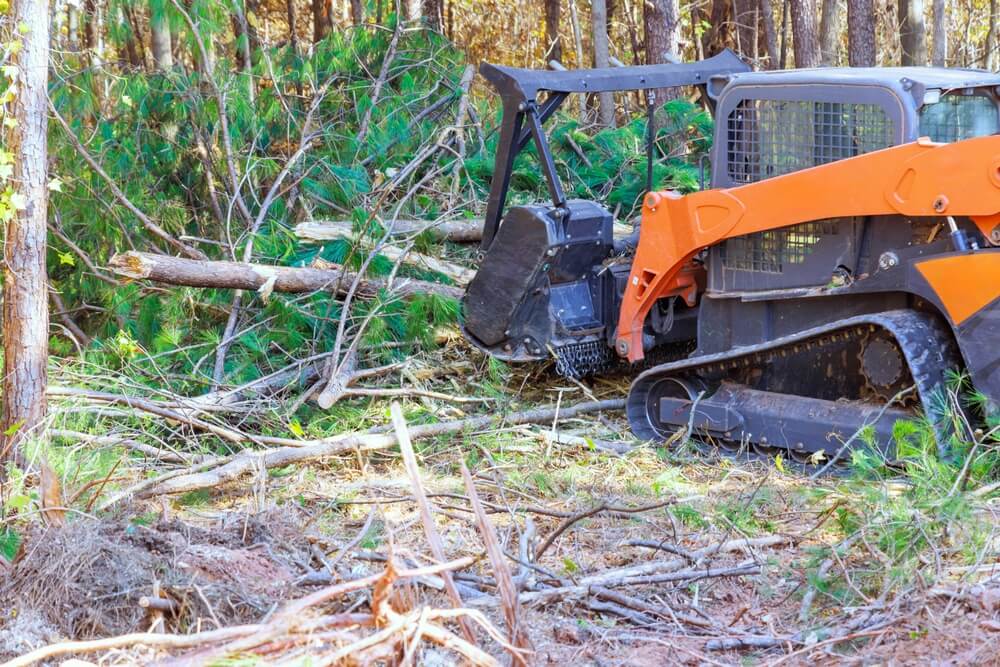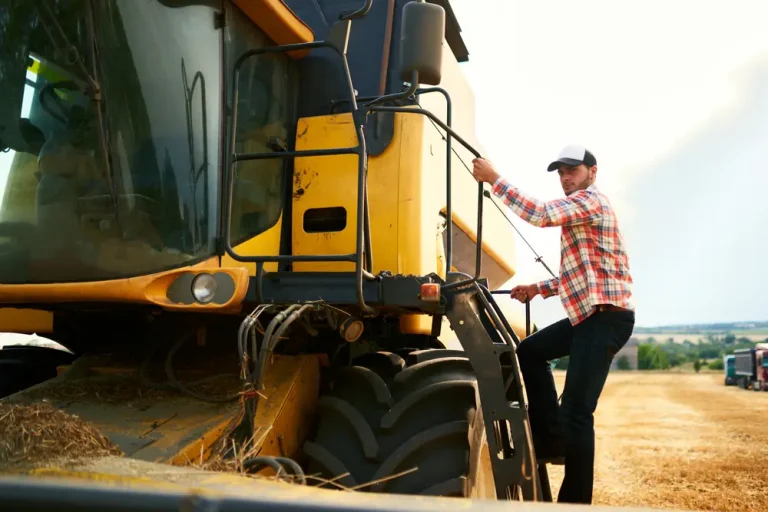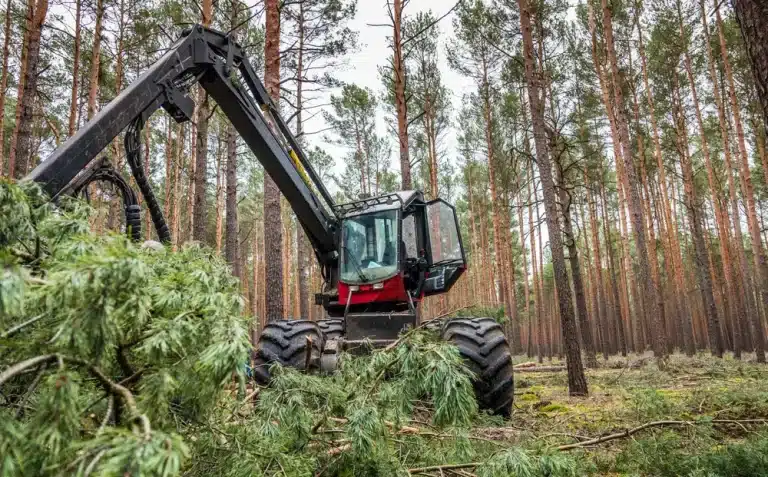In the critical days following a natural disaster, emergency land restoration moves to the front line of recovery efforts. Fallen trees, thick brush, scattered debris, and damaged vegetation create serious obstacles that can delay rebuilding and increase risks such as wildfires and soil erosion.
Choosing the right mulching tools helps accelerate cleanup operations while protecting the integrity of the land. Here, you’ll find the top equipment options designed to handle tough disaster recovery clearing conditions effectively and reliably, with insights that will guide you in restoring your site quickly and safely.
To learn about how we support land management, visit our about page or discover more about our services.
Forestry mulchers for heavy debris removal
Forestry mulchers stand out as the most powerful and versatile machines for storm debris removal. Their rotating drums, fitted with hardened steel teeth or blades, are designed to pulverize everything from small branches to large tree trunks and dense underbrush.
This capability is crucial when faced with landscapes transformed by storms, hurricanes, or wildfires, where traditional clearing methods prove too slow or inefficient.
Key advantages of forestry mulchers
Forestry mulchers deliver unmatched efficiency in clearing heavy debris, with several clear benefits:
- High capacity for large volumes of debris: Their powerful hydraulic systems keep the drum spinning at high speed, allowing quick reduction of bulky material into manageable mulch.
- Robust construction for demanding environments: Built from heavy-duty steel and reinforced components, these mulchers resist damage from rocks, soil, and thick wood, ensuring durability through harsh conditions.
- Compatibility with various carriers: Whether mounted on skid steers, spider excavators, or larger tracked machines, forestry mulchers adapt to different terrains and jobs, offering flexibility for diverse cleanup needs.
By investing in a forestry mulcher, operators gain a tool that can tackle even the most challenging post-disaster vegetation and prepare land for restoration with speed and efficiency. If you want to understand which machinery suits your site best, explore our comparison on skid steer mulchers vs spider excavator mulchers.
Important maintenance tips after disaster work
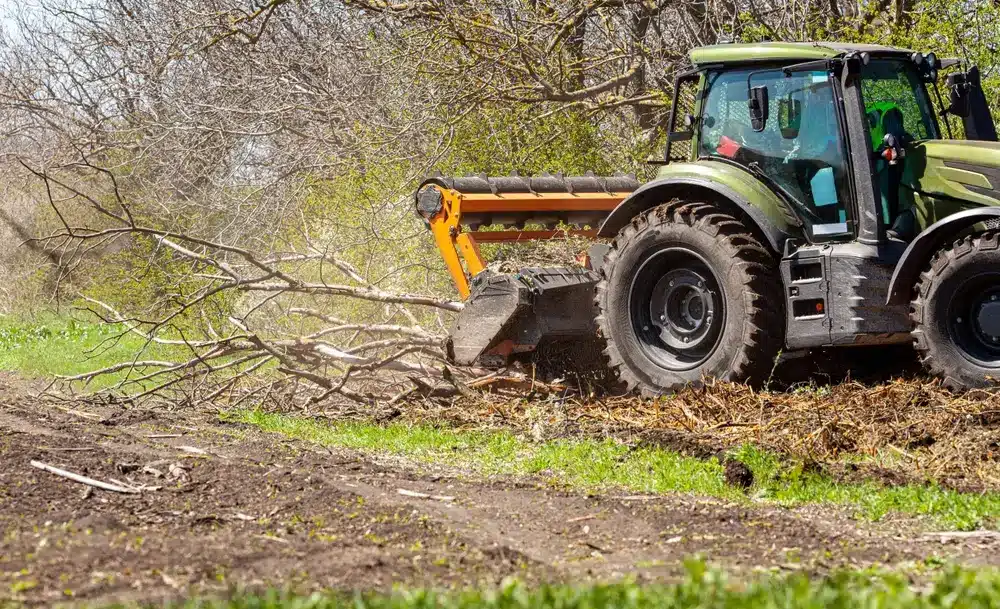
After intense use in rough terrain, proper maintenance becomes critical to keep your forestry mulcher reliable.
Regular cleaning removes mud, wood chips, and debris that could accelerate wear or clog components. Inspecting the teeth for sharpness and damage is essential; dull or broken teeth reduce cutting efficiency and stress the hydraulic system.
Checking hydraulic hoses and fittings for leaks or cracks prevents unexpected failures. A clean undercarriage ensures smooth movement and reduces corrosion risk.
You can learn detailed upkeep strategies on our page about how to maintain your forestry mulcher for long-term performance.
Flail mulchers for precision clearing
Flail mulchers serve as a complementary tool where more precise vegetation management is needed, especially in areas affected by disaster but requiring protection of structures or utilities. Unlike the aggressive drum mulchers, flail mulchers use swinging blades that rotate on a drum, producing a finer cut without excessive soil disturbance.
When to use flail mulchers
Flail mulchers excel in specific cleanup scenarios such as:
- Clearing lighter brush, small saplings, and overgrown grass
- Maintaining vegetation near buildings, fences, or power lines where precision is critical
- Managing roadside areas to reduce fire hazards while preserving infrastructure
This careful approach minimizes the risk of damaging underground utilities or destabilizing fragile soil, an important factor in disaster recovery clearing.
Benefits for post-disaster scenarios
Post-disaster cleanup often involves working in sensitive environments where aggressive clearing is not an option. Flail mulchers offer several advantages:
- Controlled mulching reduces soil erosion risk
- Lower ground impact helps preserve native vegetation and soil structure
- Quieter operation supports work in populated or wildlife-sensitive areas
Using flail mulchers in tandem with forestry mulchers can provide a comprehensive cleanup strategy that balances efficiency with environmental protection. Make sure you’re safely operating mulchers by reading our safety tips when operating a mulcher in tough terrain.
Additional tools to support post-disaster mulching
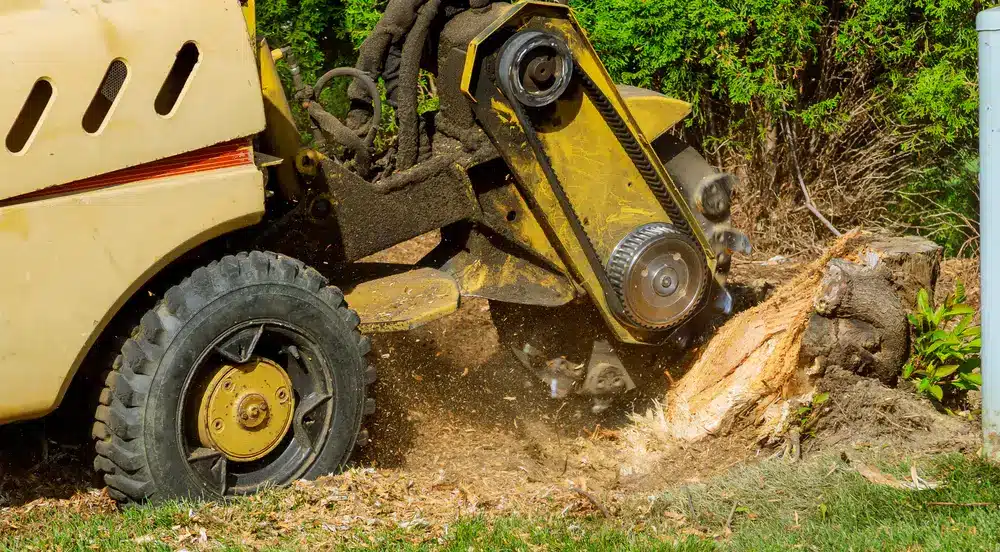
Successful cleanup goes beyond mulchers alone. Several other tools and equipment play crucial roles in a comprehensive disaster recovery plan, each addressing different challenges that mulchers cannot:
- Brush cutters: These handheld or mounted tools efficiently trim smaller vegetation and dense undergrowth, preparing areas for mulching or other land use.
- Chainsaws: Essential for cutting fallen trees or limbs too large for mulchers, chainsaws allow controlled sectioning before debris removal.
- Stump grinders: Once trees are cut and mulched, removing stumps prevents regrowth and eliminates tripping hazards or obstacles for future work.
- Loaders and excavators: Heavy machinery supports mulching operations by moving debris piles, loading mulch, and assisting with site preparation.
Combining these tools with mulchers provides a versatile toolkit capable of tackling the varied demands of post-disaster land restoration.
Read more => the role of mulchers in sustainable land management.
Safety considerations during cleanup operations
Post-disaster sites are inherently dangerous environments. Operators must take extra precautions to protect themselves and equipment from hazards like unstable trees, downed power lines, uneven terrain, and hidden debris. Implementing rigorous safety protocols ensures steady progress without injury or costly delays.
Essential safety practices
- Wear full protective gear including helmets, gloves, steel-toe boots, and eye protection to guard against flying debris and impacts.
- Conduct a detailed site assessment before starting work to identify hazards and plan safe equipment routes.
- Train operators thoroughly on all equipment functions, emergency shutdowns, and communication protocols to handle unexpected situations calmly.
- Maintain clear lines of communication among team members, using radios or signals to coordinate movement and alert others of risks.
Following these guidelines helps create a safe working environment that supports efficient cleanup and long-term project success.
“Using the right mulching equipment after a disaster is crucial. It helps clear debris efficiently while protecting the land, which is key for rebuilding ecosystems and communities.”
— Mark Reynolds, forestry equipment expert
To learn about the vegetation types mulchers can handle, see what types of vegetation can a mulcher handle?. Whether you’re considering renting vs buying a mulcher, or want to optimize performance on skid steer machines, we offer resources tailored to your needs.
Need more information?
If you want to discuss your project or get advice on equipment, visit our contact page or request a free quote. We are here to help you restore your land safely and effectively with the right tools.
